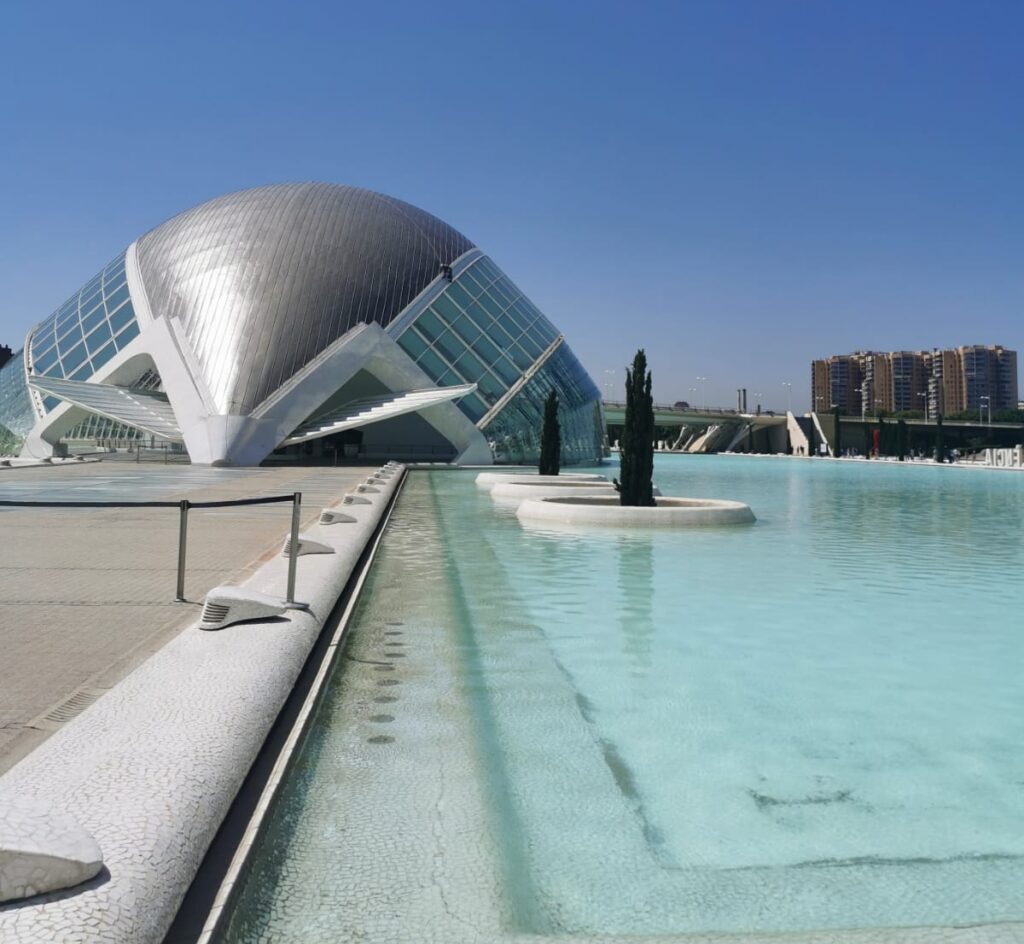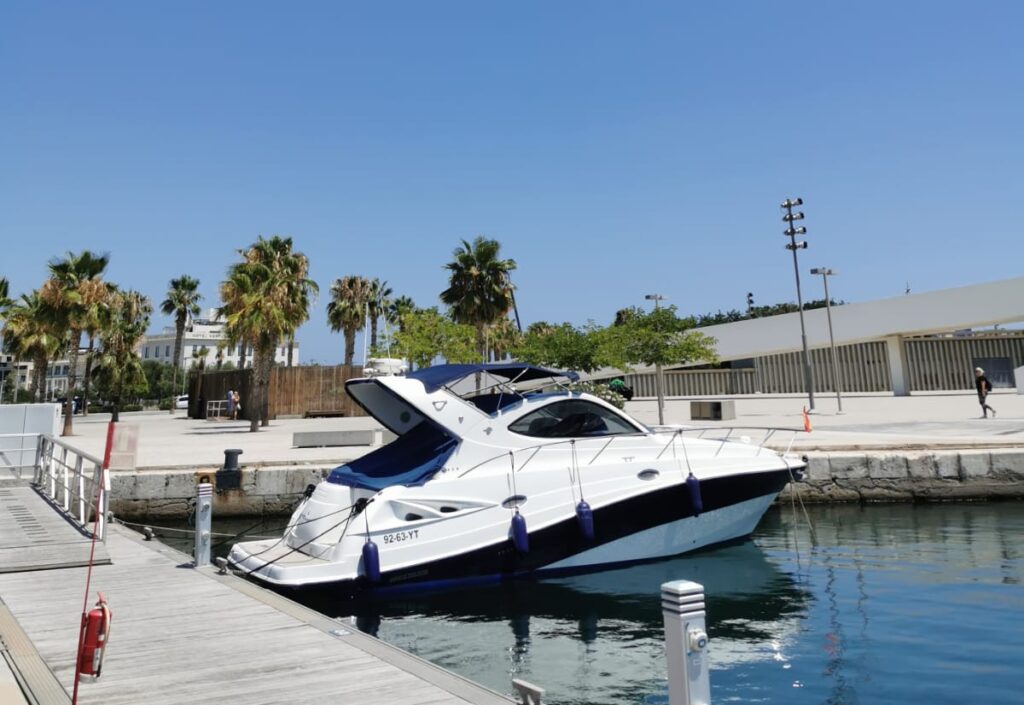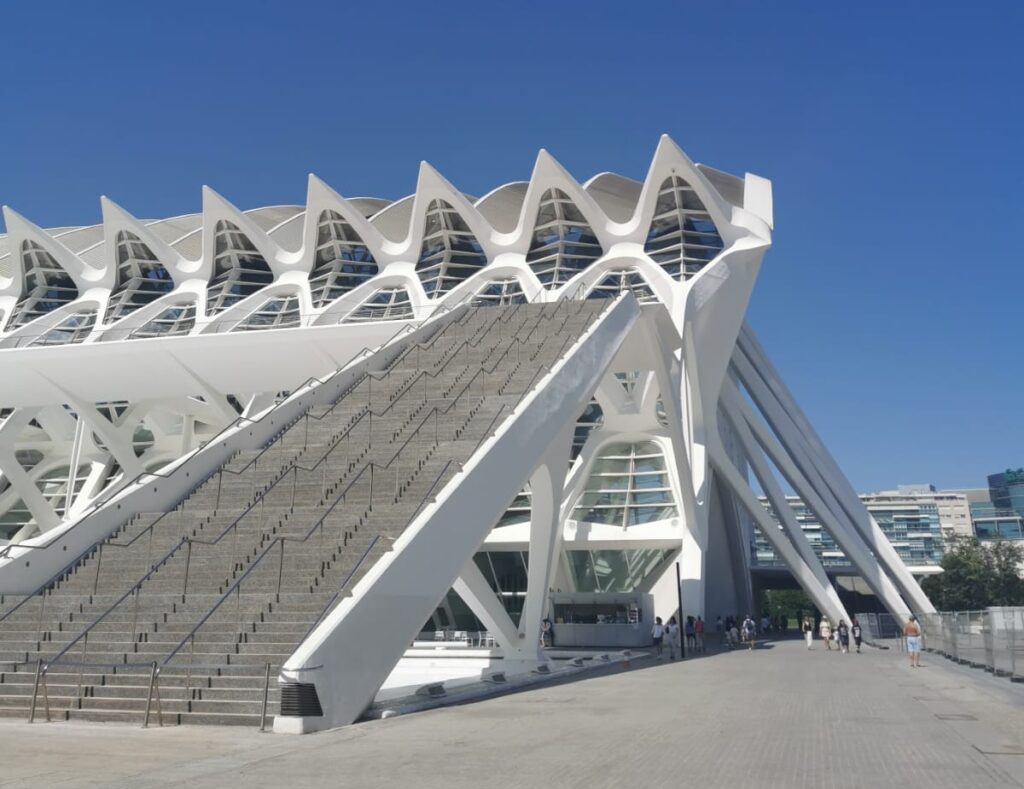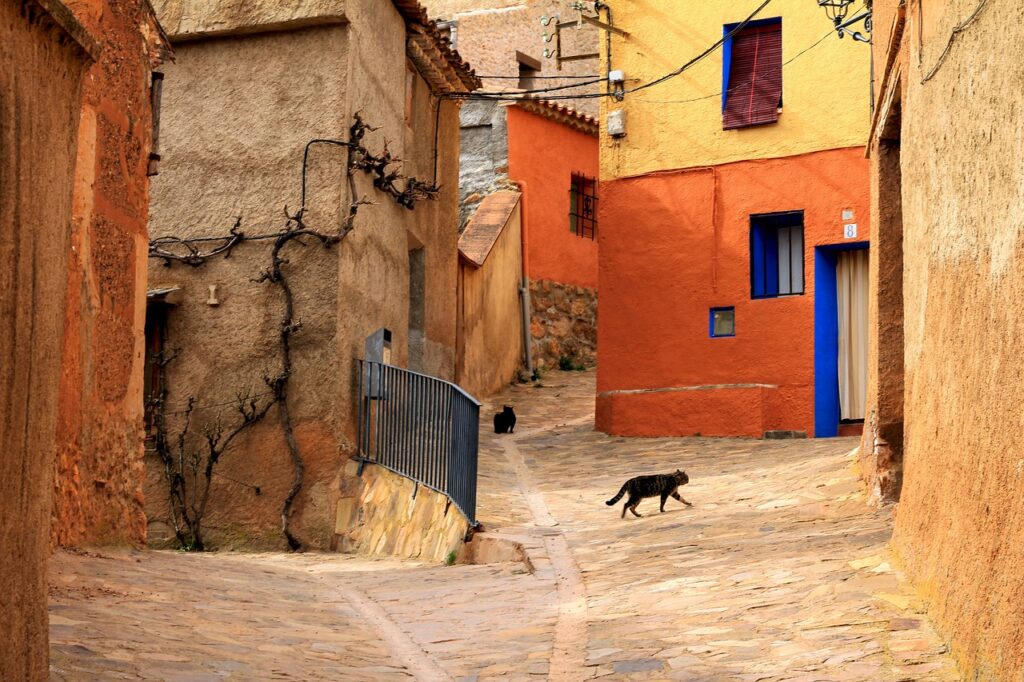Exploring Valencia: A Journey Through Time, Nature and Architecture in Spain’s Vibrant City
16th February 2025

Recent Posts
Picture this: you swing open a main door, preparing to exit a cosy building of modern studio flats. Competing voices emerge from behind you. You pause, turning around to find a pair of Spanish natives equipped with helmets and electric scooters.
‘’Hola – ‘’ you project with a façade of confidence.
You are eager to blend in.
Somehow you cannot help overthinking your pronunciation of the word and worrying that you have betrayed your Britishness too easily.
You step out onto a side street, your internal monologue vowing to pick up some Spanish over the next few days. Disoriented by the immediate onslaught of heat, you reach into your trusty tote bag to retrieve your Buxton water bottle, rewarding yourself with a long swig. But the water consumption feels ineffectual; within a few minutes, beads of sweat collate at the back of your neck.
This is Valencia.

Of all the locations I could have ventured to for a much-needed getaway from my humdrum life in Britain, you may wonder: why Valencia? After all, I could have been tempted by far more popular cities in Spain. The honest answer is mere curiosity sparked by a compelling TikTok video I happened to stumble upon.
Soon enough, a week-long stint in Valencia convinced me that the city should possess the same international acclaim as its neighbouring tourist powerhouses Barcelona and Madrid because it has just as much to offer.
Interestingly, Valencia has not always been obscured by its better-known Spanish counterparts. It enjoyed substantial prominence in the 15th century – its ‘Golden Age’. This phrase denotes a period of prosperity in which economic expansion facilitated the flourishing of arts and culture. These years saw the birth of the Silk Exchange, a commercial emporium attracting traders from across Europe and the Mediterranean Sea.
The success of these years is visually enduring. The Exchange, known as La Lonja, remains open today as a UNESCO World Heritage Site. Further indelible marks left on the cityscape include the Torres de Serranos and Catedral de Valencia, two symbols of Gothic architectural prowess.
Another treasure is the Palace of the Marqués de Dos Aguas which was originally erected in the Gothic design but underwent reformation in the mid-18th century, and now epitomises one of the finest examples of Baroque architecture in Spain.
Today, we ought to reflect on this legacy of opulence. Valencia’s past as a centre of industry and mercantilism serves as ample justification for its historical right to increased recognition on the European scene.
Although Valencia no longer dominates the Iberian Peninsula in the way that it once did, it currently enjoys its status as the third most populated city in Spain, boasting almost 800,000 inhabitants – a striking figure of demographic significance.
A widely remarked on and universally praised feature of Valencia is its capacity to immerse visitors into the depths of quotidian life. Activities typically conceived of as mundane or banal – for instance, purchasing vegetables from a grocer or obtaining electronics from a nearby store – lose their usual monotony and are instead transformed into exciting opportunities for excursions into the unknown.
Perhaps this is due to the pace with which life moves in Valencia. Time feels neither intense nor sluggish, but rather well-regulated, creating optimal conditions for daily run-of-the-mill life. This home-like and community-bound atmosphere generates a pleasant experience for visitors who become easily absorbed in domestic life.
Do not mistake this to mean that Valencia has a one-dimensional local charm, for it also has a penchant for the extravagant. A brief taxi ride to the centre exposes sight-seers to a jaw-dropping architectural complex, namely the City of Arts and Sciences.

A magnanimous series of sprawling structures stretch across the verdant Turia Garden, an idyllic 12km urban landscape. The Science Museum vaunts an impressive 40,000m2. The Hemispheric IMAX cinema covers 13,000m2. Meanwhile, the Oceanographic is sized at a whopping 110,000m2, rendering it the largest aquarium in Europe.
Resembling a scene akin to the MENA region, these stunning architectural feats masterminded by Santiago Calatrava engross visitors into a futuristic, innovative, and utopian ambience.
Even so, the greatest success of Valencia is arguably its significant scope for mass appeal. It falls neither into the category of cities that are exclusively mainstream nor hyper-eccentric. To adopt the renowned cliché – it has something for everyone.
Holiday-goers oriented towards adrenaline-inducing, highly stimulating activities can enjoy an engaging dolphin show at the dolphinarium; world-class circus acts at Fofito’s Viva El Circo; or thrilling rides at the Fira Juliol amusement park in Valencia.
Meanwhile, visitors inclined towards conventional sedentary pleasures can lounge at the sun-soaked Malvarossa Beach; unwind on a laid-back Catamaran cruise on the Mediterranean Sea; navigate the lush vegetation at the Botanical Garden, or be surfeited with the joys of Spanish retail at the Saler shopping centre.

On 29 October 2024, after receiving a year’s worth of rain within only eight hours, Valencia launched onto the world stage for all the wrong reasons. Deadly flash flooding claimed the lives of over 220 people and caused widespread property damage.
This was far from being an unprecedented occurrence for the city, with flooding in Valencia dating back to the 14th century, and more recently in the 1957 Great Flood of Valencia.
Since then, the city has undergone rapid recovery efforts: water has been pumped, debris have been cleared, and rubble has been transported. In the aftermath of the initial emergency response, the focus has shifted towards long-term planning for flood prevention.
As of today, services and tourist attractions are operating as usual, rendering the city both a safe and attractive destination. If ever Valencia had a need for tourists, it is now. There is an urgent social responsibility for visitors to help facilitate Valencia’s pending economic and spiritual healing.
This point is especially acute when considering the overtourism that currently overwhelms the likes of Barcelona, Madrid, Mallorca and Seville. Now is the perfect time to discover underrated gems like Valencia, where you can enjoy a more relaxed and equally authentic Spanish experience.
Up until now, you may have only heard of Valencia in passing, perhaps in reference to the flooding, or in positive terms as the birthplace of paella (a staple in Spanish cuisine), and a leading producer of oranges (the city accounts for 80% of all Spanish citrus exported to the UK).
Regardless, Valencia’s capacity to deliver an exceptional tourist experience – with its distinguishing feature being its provision of a slow-relaxed pace, balanced out by architectural supremacy – is yet to be communicated on a large scale.
Ultimately, one point is clear: for far too long, Valencia has been unduly overlooked. An over-fixation on a handful of Spanish competitor cities has left Valencia undeservedly dwarfed in reputation.

The litany of wide-ranging attractions outlined above and their capacity to cater to diverse tourist personas, prove that Valencia possesses the necessary qualities to emerge as a robust contender on the global tourism scene.
Put simply, Valencia is a journey through time, nature and architecture. Contemporary visitors have the pleasure of bearing witness to an invisible tapestry which traces the city’s progression from the past to the present, shifting between Gothic, Baroque and ultramodern themes.
Take it from me: Valencia’s ineffable fusion of local and global tastes, combined with its aesthetic and experiential power to generate simultaneous sensations of novelty and familiarity, renders it a force to be reckoned with.
Written by Nadia Mahmoud

